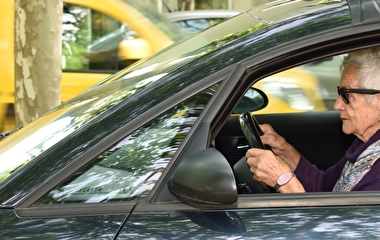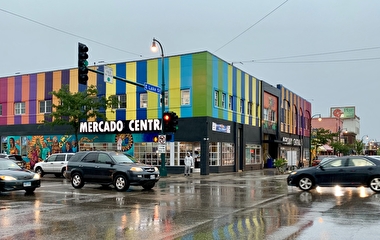
The year 2020 will likely go down in history as one of the most disruptive ever, with droughts, fires, floods, and a worldwide pandemic affecting our way of life as well as our local, regional, and global transportation systems with sudden and extraordinary speed. In the afternoon plenary session of the annual CTS Transportation Research Conference (held virtually on November 5), founder and CEO of Emerging Transport Advisors Timothy Papandreou discussed how these combined forces compel us to reexamine the status quo and offer a once-in-a-lifetime opportunity to reimagine our transportation systems.
“Earlier this year, the pandemic lockdown created a momentary pause to really think about what we are doing in transportation, identify what is not working, and figure out ways to make things work,” Papandreou said.
According to Papandreou, there are three business models in transportation: the ownership model, the ride model, and the rent model. However, he said these three models are not treated equally by policy, and that bias toward the individual car ownership model has led to an unsustainable, unjust, and inequitable transportation system.
“When we begin to understand that our current transportation business model perpetuates a vicious cycle of private vehicle dependency, we shouldn’t be surprised why people take certain modes of transportation and why others aren’t available to them,” he stated. “When the whole system is designed around the car, those who can’t afford to own them or are unable to operate them are locked out of economic opportunities.”
The bright spot, said Papandreou, is that when combined with a shift in policy, major transportation trends such as digitization, sharing, electrification, and automation have the ability to unravel the cycle of private vehicle dependency. To leverage these changes, governments will need to shift the way they govern the right-of-way and their management mindsets.
“Transportation practitioners need to think less internally and experiment more,” Papandreou said. “This means empathizing and connecting with the communities we serve, saying yes to ideas those communities generate, prototyping ideas and testing them on a small scale, and going big with the ideas that work.”
In the pursuit of a more equitable transportation system, Papandreou encouraged the use of five “guardrails” in decision making. He said services, systems, and programs should result in safety (physically, socially, and personally), equity, interconnectivity, affordability, and sustainability. “Using these guardrails keeps the focus on connecting people, not just moving vehicles,” he said.
Moving forward in this way, Papandreou envisioned a “restorative transformation” in transportation in which communities can move toward an equitable and sustainable mobility model. This transformation will have these phases:
- Acting by acknowledging the current model isn’t working,
- Triaging the actions that can be taken immediately and in the near future,
- Pivoting by determining what types of transportation will and will not be subsidized moving forward,
- Restoring by correcting past mistakes, and
- Transforming transportation systems in a way that creates resiliency.
Writer: Megan Tsai


